Jack bean
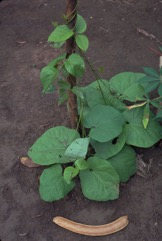
It grows in tropical and subtropical places. It requires a fairly high temperature (15°-30°C). It will possibly grow up to 1,600 m altitude. It is fairly drought resistant and also has some resistance to water-logging and salt in the soil. It can tolerate shade. It can tolerate pH from 4.5 - 8.0 but does best at about 6.1. The optimum mean annual temperature is 14.4°-27.8°C. Seed germinate between 24-27.5°C. It is a short day plant growing well with a daylength of 10-12 hours of sunlight. It can grow in arid places. In Argentina it grows below 500 m above sea level. In XTBG Yunnan.
Also known as:
Banchaki, Bara sem, Baran chaki, Broad Bean, Chickasaw Lima, Cocorico, Cut-Eye, Dau-rua, Dau-tac, Dolique, Fannto, Feijao, Garde Place, Gotani bean, Gros Pois, Horse Bean, Jamaican horse bean, Jangala, Kaat thumbuten kai, Kachang parang puteh, Kalongonda, Kangianeteupi, Ladiko, Makhan shim, Mavi, Nkasa zi madeso, One-Eye Bean, Overlook, Pandhri abai, Papanla, Popondo, Prapiey sbaek, Sabre bean, Samkhra, Sufed kadsumbal, Sword bean, Tamma, Vella tamma, Vellai tambattai, Voavahibe
Synonyms
- Canavalia ensiformis (L.) DC. var. albida DC.
- Canavalia ensiformis (L.) DC. var truncata Ricker
- Canavalia gladiata (Jacq.) DC. var. leucosperma Voigt
- Dolichos acinaciformis Jacq.
- Dolichos ensiformis L.
- Dolichos pugioniformis Rausch.
- Canavalia gladiata (Jacq.) DC var. ensiformis (L.) Benth.
- Malocchia ensiformis (L.) Savi
Edible Portion
- Seeds, Leaves, Young pods, Spice, Flowers, Vegetable
Where does Jack bean grow?
Found in: Africa, Angola, Argentina, Asia, Australia, Bangladesh, Belize, Benin, Bolivia, Brazil, Burkina Faso, Cambodia, Cameroon, Caribbean, Central Africa, Central America, Chad, China, Colombia, Congo DR, Costa Rica, Côte d'Ivoire, Cuba, Dominican Republic, East Africa, Egypt, El Salvador, Ethiopia, Fiji, French Guiana, Gabon, Ghana, Grenada, Guadeloupe, Guatemala, Guianas, Guinea, Guinée, Guinea-Bissau, Guyana, Haiti, Hawaii, Himalayas, Honduras, India, Indochina, Indonesia, Ivory Coast, Jamaica, Japan, Kenya, Kiribati, Korea, Laos, Liberia, Madagascar, Malawi, Malaysia, Maldives, Mali, Marianas, Martinique, Mauritius, Mexico, Mozambique, Myanmar, Namibia, Nauru, New Caledonia, Niger, Nigeria, North Africa, North America, Northeastern India, Pacific, Panama, Papua New Guinea, PNG, Paraguay, Peru, Philippines, Puerto Rico, Reunion, Sao Tome and Principe, SE Asia, Seychelles, Senegal, Sierra Leone, Singapore, Sri Lanka, Solomon Islands, South Africa, Southern Africa, South America, Sudan, Suriname, Taiwan, Tanzania, Thailand, Togo, Tonga, Trinidad & Tobago, Uruguay, United States, Venezuela, Vietnam, West Africa, West Indies, Zambia, Zimbabwe
Notes: There are about 50 Canavalia species. Chemical composition (acid content) (Nigerian sample): oil = 1%; component esters (wt. %): 16:0 = 17%. 16:1 = 2%. 18:0 = 2%. 18:1 = 49%, 18:2 = 18%. 18:3 = 7%. 20:0 = 1%. 22:0 = 1%. 24:0 = 2%. Reported to have a high Threonine value.
Status: It is a commercially cultivated vegetable. It is being accepted and grown in some coastal and mid altitude areas in Papua New Guinea. Pods are sold in local markets.
Growing Jack bean
Cultivation: It is grown from seeds. Seeds need to be 2 cm deep. A spacing of about 60 cm is suitable. Plants preferably need a support to climb over. It benefits from a fertile soil but adding nitrogen depresses yield.
Edible Uses: The leaves and top shoots are eaten. The very young pods are boiled and eaten. The flowers can be eaten. The young seeds are eaten boiled, roasted, or peeled and cooked. The seeds are also fermented. The ripe seeds are roasted and used as a coffee substitute. CAUTION The ripe seeds can contain poison and need to be well cooked and the water changed before eating. They are also often left under running water or fermented.
Production: Green pods are produced in 3-4 months, but ripe seeds need 6-9 months. Yield of seeds can range from 700 to 5,400 kg / ha.
Nutrition Info
per 100g edible portion| Edible Part | Energy (kcal) | Protein (g) | Iron (mg) | Vitamin A (ug) | Vitamin c (mg) | Zinc (mg) | % Water |
|---|---|---|---|---|---|---|---|
| Pods - fresh | 37 | 2.4 | - | - | - | - | 88 |
| Seeds | 340 | 20.4 | 4.9 | 160 | 0 | - | 10 |
| Leaves | - | - | - | - | - | - | |
| Flowers | - | - | - | - | - | - |
Jack bean Photos

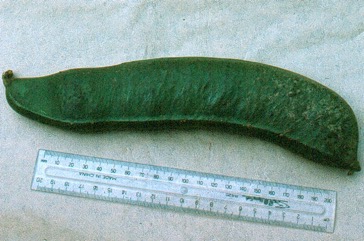
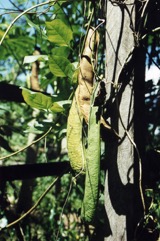
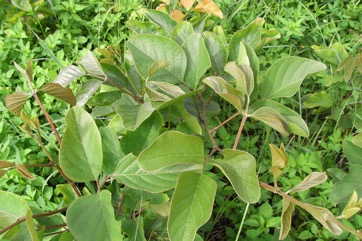
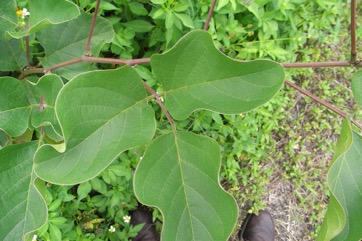
References
Jack bean references
Abbiw, D.K., 1990, Useful Plants of Ghana. West African uses of wild and cultivated plants. Intermediate Technology Publications and the Royal Botanic Gardens, Kew. p 31
Ambasta S.P. (Ed.), 2000, The Useful Plants of India. CSIR India. p 100
Anderson, E. F., 1993, Plants and people of the Golden Triangle. Dioscorides Press. p 205
Bircher, A. G. & Bircher, W. H., 2000, Encyclopedia of Fruit Trees and Edible Flowering Plants in Egypt and the Subtropics. AUC Press. p 79
Burkill, I.H., 1966, A Dictionary of the Economic Products of the Malay Peninsula. Ministry of Agriculture and Cooperatives, Kuala Lumpur, Malaysia. Vol 1 (A-H) p 437
Cobley, L.S. (rev. Steele, W.M.) 2nd Ed., 1976, An Introduction to the Botany of Tropical Crops. Longmans. p 102
Duke, J.A., 1981, Handbook of Legumes of World Economic Importance. Plenum Press, New York. p 39-41
Ekman Herbarium records Haiti
Facciola, S., 1998, Cornucopia 2: a Source Book of Edible Plants. Kampong Publications, p 103
Fowler, D. G., 2007, Zambian Plants: Their Vernacular Names and Uses. Kew. p 80
Fox, F. W. & Young, M. E. N., 1982, Food from the Veld. Delta Books. p 204
French, B.R., 1986, Food Plants of Papua New Guinea, A Compendium. Asia Pacific Science Foundation p 43
French, B.R., 2010, Food Plants of Solomon Islands. A Compendium. Food Plants International Inc. p 57
GAMMIE,
Hedrick, U.P., 1919, (Ed.), Sturtevant's edible plants of the world. p 149
Henty, E.E., 1980, Harmful Plants in Papua New Guinea. Botany Bulletin No 12. Division Botany, Lae, Papua New Guinea. p 79
Hermandez Bermejo, J.E., and Leon, J. (Eds.), 1994, Neglected Crops. 1492 from a different perspective. FAO Plant Production and Protection Series No 26. FAO, Rome. p18
Hussey, B.M.J., Keighery, G.J., Cousens, R.D., Dodd, J., Lloyd, S.G., 1997, Western Weeds. A guide to the weeds of Western Australia. Plant Protection Society of Western Australia. p 148
Jardin, C., 1970, List of Foods Used In Africa, FAO Nutrition Information Document Series No 2.p 25, 62
Kays, S. J., and Dias, J. C. S., 1995, Common Names of Commercially Cultivated Vegetables of the World in 15 languages. Economic Botany, Vol. 49, No. 2, pp. 115-152
Kiple, K.F. & Ornelas, K.C., (eds), 2000, The Cambridge World History of Food. CUP p 1790
Latham, P., 2004, Useful Plants of Bas-Congo province. Salvation Army & DFID p 66
Lazarides, M. & Hince, B., 1993, Handbook of Economic Plants of Australia, CSIRO. p 46
Lembogi Biologi Nasional, 1980, Sayur-sayuran. Balai Pustaka, Jakarta. p 46
Macmillan, H.F. (Revised Barlow, H.S., et al) 1991, Tropical Planting and Gardening. Sixth edition. Malayan Nature Society. Kuala Lumpur. p 322
Martin, F.W. & Ruberte, R.M., 1979, Edible Leaves of the Tropics. Antillian College Press, Mayaguez, Puerto Rico. p 198
Medhi, P. & Borthakur, S. K., 2012, Phytoresources from North Cachur Hills of Assam -3: Edible plants sold at Hflong market. Indian Journal or Natural Products and Resources. 3(1) pp 84-109
Medhi, P. & Borthakur, S. K., 2013, Wild edible plants sold by the Zeme Nagas at the makeshift market of Mahur, Dima Hasao district of Assam. Pleione 7(1): 84 - 93. 2013PNG. p 563, 562
Medhi, P., Sarma, A and Borthakur, S. K., 2014, Wild edible plants from the Dima Hasao district of Assam, India. Pleione 8(1): 133-148
Menninger, E.A., 1977, Edible Nuts of the World. Horticultural Books. Florida p 91
Miguel, E., et al, 1989, A checklist of the cultivated plants of Cuba. Kulturpflanze 37. 1989, 211-357
Murtem, G. & Chaudhrey, P., 2016, An ethnobotanical note on wild edible plants of Upper Eastern Himalaya, India. Brazilian Journal of Biological Sciences, 2016, v. 3, no. 5, p. 63-81.
Nyadanu, D., et al, 2015, Agro-biodiversity and challenges of on-farm conservation: the case of plant genetic resources of neglected and underutilized crop species in Ghana. Genet. Resourc. Crop Evol. 62(7):
Ochse, J.J. et al, 1931, Vegetables of the Dutch East Indies. Asher reprint. p 372
Omawale, 1973, Guyana's edible plants. Guyana University, Georgetown p 103
Paczkowska, G . & Chapman, A.R., 2000, The Western Australian Flora. A Descriptive Catalogue. Western Australian Herbarium. p 419
Peekel, P.G., 1984, (Translation E.E.Henty), Flora of the Bismarck Archipelago for Naturalists, Division of Botany, Lae, PNG. p 255, 254
Pham-Hoang Ho, 1999, An Illustrated Flora of Vietnam. Nha Xuat Ban Tre. p 944
Phon, P., 2000, Plants used in Cambodia. © Pauline Dy Phon, Phnom Penh, Cambodia. p 128
Plants of Haiti Smithsonian Institute http://botany.si.edu/antilles/West Indies
Plowes, N. J. & Taylor, F. W., 1997, The Processing of Indigenous Fruits and other Wildfoods of Southern Africa. in Smartt, L. & Haq. (Eds) Domestication, Production and Utilization of New Crops. ICUC p 187
Prodr. 2:404. 1825
PROSEA handbook Volume 13 Spices. p 275
PROSEA (Plant Resources of South East Asia) handbook, Volume 4, 1992, Forages.
Purseglove, J.W., 1968, Tropical Crops Dicotyledons, Longmans. p 242
Rashid, H. E., 1977, Geography of Bangladesh. Westview. p 261
Recher, P, 2001, Fruit Spirit Botanical Gardens Plant Index. www.nrg.com.au/~recher/ seedlist.html p 5
Royal Botanic Gardens, Kew (1999). Survey of Economic Plants for Arid and Semi-Arid Lands (SEPASAL) database. Published on the Internet; http://www.rbgkew.org.uk/ceb/sepasal/internet [Accessed 28th April 2011]
Ruiters-Welcome, A. K., 2019, Food plants of southern Africa. Ph.D. thesis. Univ. of Johannesburg p 56
Sharma, B.B., 2005, Growing fruits and vegetables. Publications Division. Ministry of Information and broadcasting. India. p 151
SHORTT, (As Dolichos ensiformis)
Sp. pl. 2:725. 1753 (As Dolichos ensiformis)
Smith, A.C., 1985, Flora Vitiensis Nova, Lawaii, Kuai, Hawaii, Volume 3 p 221
van Wyk, B., 2005, Food Plants of the World. An illustrated guide. Timber press. p 113
Terra, G.J.A., 1973, Tropical Vegetables. Communication 54e Royal Tropical Institute, Amsterdam, p 34
Tindall, H.D., 1983, Vegetables in the Tropics, Macmillan p 257
USDA, ARS, National Genetic Resources Program. Germplasm Resources Information Network - (GRIN). [Online Database] National Germplasm Resources Laboratory, Beltsville, Maryland. Available: www.ars-grin.gov/cgi-bin/npgs/html/econ.pl (10 April 2000)
VAN ETTEN et al (1963),
van Wyk, Be, & Gericke, N., 2007, People's plants. A Guide to Useful Plants of Southern Africa. Briza. p 22 (As Canavalia ensifolia)
van Wyk, Be., & Gericke, N., 2007, People's plants. A Guide to Useful Plants of Southern Africa. Briza. p 102 (As Canavalia ensifolia)
van Wyk, Ben-Erik, 2019, The diversity and multiple uses of southern African legumes. Australian Systematic Botany, 2019, 32, 519–546
Vasquez, R. and Gentry, A. H., 1989, Use and Misuse of Forest-harvested Fruits in the Iquitos Area. Conservation Biology 3(4): 350f
Verdcourt, B., 1979, Manual of New Guinea Legumes. Botany Bulletin No 11, Division of Botany, Lae, Papua New Guinea. p 473
Wealth of India, 1959, Council of Scientific and Industrial Research, New Delhi. p 55-56
Wheeler, J.R.(ed.), 1992, Flora of the Kimberley Region. CALM, Western Australian Herbarium, p 376
Williams, C.N., Chew, W.Y., and Rajaratnam, J.A., 1989, Tree and Field Crops of the Wetter Regions of the Tropics. Longman, p 184
Williamson, J., 2005, Useful Plants of Malawi. 3rd. Edition. Mdadzi Book Trust. p 52
Wilson, J.M. & Witcombe, J.R., Crops for Arid lands, in Wickens, G.E., Goodin, J.R., and Field, D.V.,(Eds.) 1985, Plants for Arid Lands. Unwin Hyman, London, p 45
World Checklist of Useful Plant Species 2020. Royal Botanic Gardens, Kew
Yuncker, T.G., 1959, Plants of Tonga, Bernice P. Bishop Museum, Hawaii, Bulletin 220. p 148